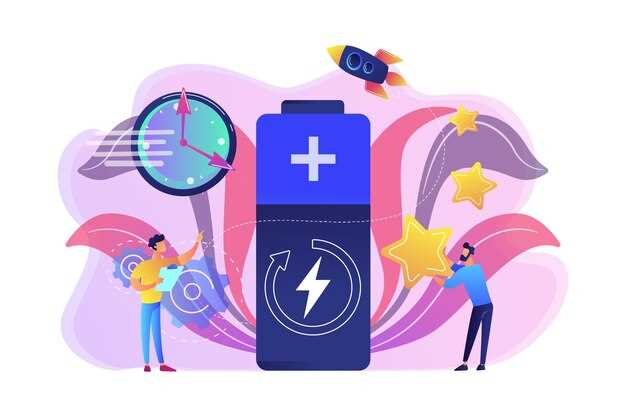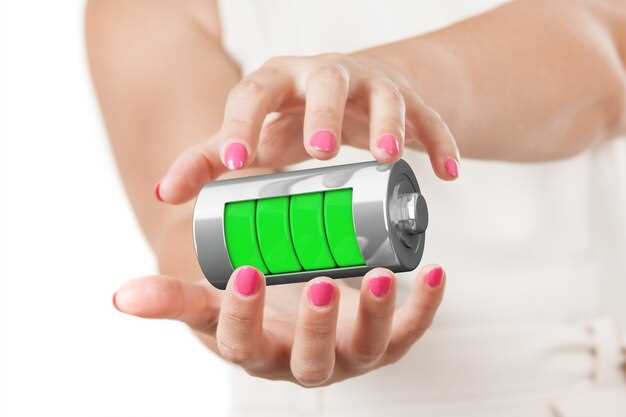How to Keep Your Battery Running Longer

In today’s fast-paced digital world, the performance and longevity of your device’s battery are more critical than ever. When a device runs out of battery, it can disrupt productivity and hinder our daily tasks. Understanding how to manage and extend battery life is essential for getting the most out of your gadgets, whether they are smartphones, laptops, or tablets.
One of the key factors in battery longevity is knowing when a replacement is needed. As batteries age, their capacity diminishes, leading to shorter run times and decreased performance. Recognizing signs of deteriorating battery health can help you make timely decisions regarding replacements and ensure optimal functioning of your devices.
Moreover, employing smart usage techniques can significantly enhance battery performance. From adjusting screen brightness and managing app usage to optimizing settings, small changes can lead to substantial improvements. In this article, we will explore various tips and strategies to help you extend your battery life and enhance your overall device performance.
Optimize Your Settings for Maximum Battery Efficiency

To achieve optimal battery life and performance, adjusting your device settings is crucial. These modifications can significantly extend usage time between charges, reducing the need for frequent battery replacement.
1. Screen Brightness: Lower the screen brightness or enable adaptive brightness to automatically adjust based on your environment. A dimmer screen consumes less power, leading to enhanced battery longevity.
2. Sleep Mode: Set your device to enter sleep mode after a short period of inactivity. This not only conserves battery but also accelerates the process of returning to active use.
3. Background Apps: Limit background app activity. Disable apps that refresh in the background, as they can drain battery without your knowledge. Within settings, review which applications need permission to operate and restrict those that are unnecessary.
4. Location Services: Turn off GPS and location services when not needed. These features are significant battery consumers. Opt for manual location access instead of allowing apps to use your location continuously.
5. Connectivity Settings: Deactivate Wi-Fi, Bluetooth, and mobile data when they are not in use. Connectivity features can consume battery life even in standby mode. Consider enabling Airplane Mode when you do not need wireless services.
6. Notifications: Adjust your notification settings to minimize alerts that light up your screen. Limit notifications to only essential apps, reducing unnecessary power drain.
7. Power Management Features: Utilize built-in power-saving modes offered by your device. These modes automatically tweak settings to enhance battery usage efficiency, allowing for longer operation on a single charge.
By implementing these settings adjustments, you can optimize your device’s battery efficiency, prolong its life, and delay the need for a battery replacement. Regularly reviewing and refining your settings ensures that your device performs at its best while maximizing battery performance.
Identify and Replace Failing Batteries Promptly

Recognizing the signs of a failing battery is crucial to maintaining device performance and extending battery life. Common indicators include decreased battery life, slow charging, and unexpected shutdowns. If your device starts exhibiting these symptoms, it’s time to take action.
Monitor Your Device’s Performance: Keep an eye on how quickly your battery drains during regular use. If you notice a significant drop in performance, this could signal that the battery is deteriorating. Additionally, unusual heat when charging or while in use can point to underlying issues.
Check Battery Health: Many devices offer built-in tools to check battery health. Regularly review this information to determine if your battery is operating within normal parameters. If the health percentage falls below a certain threshold, it is advisable to replace the battery.
Timing for Replacement: If your device experiences sudden performance drops or cannot hold a charge for a reasonable period, don’t hesitate to replace the battery. Waiting too long can lead to increased wear on the device and potentially cause further damage.
Choose Quality Batteries: When it’s time to replace your battery, opt for high-quality or original manufacturer batteries. This ensures compatibility and may enhance overall performance and longevity.
By identifying signs of battery failure early and replacing them promptly, you can significantly improve your device’s efficiency and lifespan.
Utilize Power-Saving Features and Accessories
One of the most effective ways to extend battery life is by utilizing the power-saving features available on your device. Most modern smartphones, laptops, and tablets come equipped with built-in power management settings that allow you to optimize performance while conserving battery life. By activating these features, you can reduce screen brightness, limit background app activity, and turn off non-essential services like Bluetooth and GPS when they are not needed.
Additionally, consider using accessories designed to enhance battery efficiency. For instance, portable battery packs can provide extra power during long outings, ensuring your device remains operational when you’re away from an outlet. Solar chargers are another eco-friendly option, harnessing sunlight to keep your battery charged during outdoor activities.
Using a screen protector can further enhance your device’s battery longevity. Some screen protectors help reduce glare, allowing you to maintain a lower brightness level without sacrificing visibility. Similarly, cases with built-in battery features add another layer of power accessibility, making it easier to recharge your device on the go.
Moreover, regularly updating your device’s firmware and software can lead to improved power management. Manufacturers often release updates that enhance battery performance and introduce new energy-saving features.
Lastly, be mindful of your device’s usage habits. Close unused apps running in the background, disable automatic updates, and limit push notifications to only essential applications. By managing how you use your device, you can significantly increase your battery life and overall performance.

